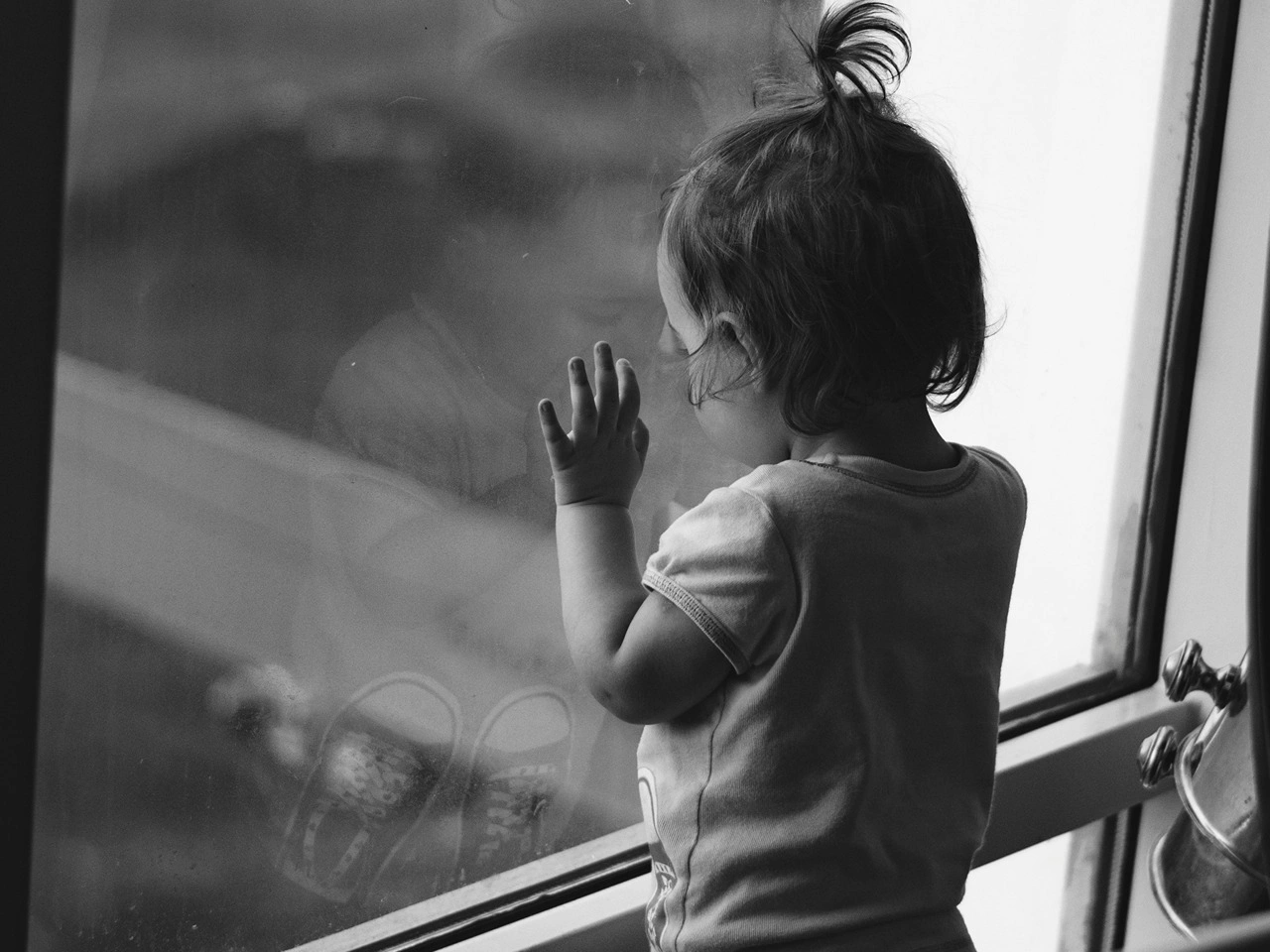
Anxious Ambivalent Attachment: How This Insecure Attachment Style Affects Relationships
Learn what ambivalent attachment is, how anxious ambivalent attachment affects adult and romantic relationships, and ways to build a secure attachment style.

Have you ever wanted to feel close to someone but found yourself afraid they might pull away? In attachment theory, this struggle is often linked to anxious-ambivalent attachment, a form of insecure attachment characterized by inconsistent responses from early caregivers. The way we were cared for as children often shapes the pattern of attachment we carry into our adult lives.
In attachment theory and research, the anxious attachment style is one of the main attachment styles that influences how we form close relationships. This style of attachment begins with a child’s attachment to their caregiver and can continue to affect adult attachment and intimate relationships later on. Many people with this pattern of behaviour find themselves seeking reassurance yet fearing rejection, which makes emotional security harder to maintain.
Learning about your own ambivalent attachment style can be a powerful step toward healing old attachment issues. With self-awareness and emotional growth, it’s possible to develop a secure attachment and form stronger, more balanced attachment bonds. Keep reading to discover how this form of insecure attachment influences adult relationships and ways to create healthier emotional connections.
Understanding Anxious Ambivalent Attachment Through Attachment Theory

Anxious-ambivalent attachment is a form of insecure attachment that develops from early attachment experiences when a caregiver responds inconsistently to a child’s needs. Attachment research shows that these early experiences shape the attachment system and influence attachment in adulthood, affecting how people form bonds and experience attachment security in relationships.
Origins in Early Attachment Experiences
- This attachment often develops when an attachment figure responds inconsistently to a child’s needs, leaving the child unsure if they can rely on that person.
- These inconsistent early attachment relationships can disrupt early attachment security, creating attachment insecurity that may carry into adult relationships.
- Over time, these experiences shape the attachment pattern and influence the adult attachment style, sometimes causing worry, doubt, or fear of being abandoned.
How Anxious-Ambivalent Attachment Develops in Children
- Children with ambivalent attachment may become clingy or very upset when separated from their attachment figure, not knowing if comfort will come.
- They learn that showing their needs might sometimes work, but other times it may not, which can lead to attachment anxiety and inconsistent behaviour in relationships.
- These early attachment experiences influence the development of attachment and the overall quality of attachment seen in adult relationships, often shaping how people connect and trust others later in life.
How an Ambivalent Attachment Style Affects Adult Relationships

An ambivalent attachment is a form of insecure attachment that comes from early attachment experiences and continues to influence attachment in adulthood. People with this attachment style may feel unsure if their emotional needs will be met, which can make adult relationships feel stressful or unpredictable. Attachment studies show that these patterns reflect how the attachment behavioural system reacts to attachment anxiety and inconsistent caregiving in childhood.
Impact on Intimate Relationships
- People with an ambivalent attachment often seek frequent reassurance and closeness from their partner, even when the relationship is stable.
- This attachment style may create emotional ups and downs, making intimacy feel both intense and fragile.
- Over time, attachment insecurity shaped by early attachment experiences can affect the quality of attachment in adult relationships, including trust and emotional connection.
Emotional Challenges in Close Connections
- Adults with this attachment style often struggle with attachment anxiety, worrying that their partner may not value or support them.
- They may overanalyze their partner’s actions, a pattern related to ambivalent attachment in childhood.
- These emotional challenges can make it harder to navigate the attachment process and maintain secure, balanced adult relationships.
Insecure Attachment Patterns: Behaviours and Impact in Close Relationships

Insecure attachment often comes from inconsistent caregiving in childhood. People with ambivalent or anxious attachment may find it hard to trust others or feel emotionally safe in relationships. Studies of attachment show that these patterns affect the attachment behavioural system and shape attachment in adulthood.
Different Attachment Styles in Adulthood
- Attachment classification identifies four main styles in adulthood: ambivalent, avoidant, preoccupied, and secure.
- Adults with ambivalent attachment often feel anxious, while those with avoidant attachment style may keep a distance from partners.
- People with insecure attachment may struggle to balance closeness and independence in relationships.
- Understanding a specific attachment style can explain emotional reactions and patterns of behaviour.
- Looking at attachment history can help people understand why some relationships feel more challenging than others.
Long-Term Effects of Attachment Insecurity
- Early attachment experiences shape the attachment behavioural system and influence adult attachment style.
- People with insecure attachment may repeatedly seek reassurance or pull away from intimacy.
- Ambivalent attachment is a form of insecure attachment that can lead to emotional ups and downs in relationships.
- Attachment in adulthood is often affected by unresolved attachment issues from childhood.
- These insecure attachment patterns can affect trust, communication, and the overall quality of adult attachment relationships.
Symptoms of Anxious-Ambivalent Attachment

Anxious-ambivalent attachment often starts in childhood and infancy when a caregiver’s responses are inconsistent. This attachment is characterized by worry, insecurity, and heightened sensitivity in relationships. People with this attachment style often notice patterns in how they act and feel with close partners.
Behavioural Signs in Adult Relationships
- Frequently seeking reassurance from a partner, even when the relationship feels secure
- Clinginess or fear of being separated from loved ones
- Struggling to balance closeness and independence
- Overanalyzing a partner’s actions or words
- Experiencing repeated conflicts or misunderstandings
- Difficulty fully trusting a partner
- Patterns of push-pull behaviour in intimacy
Emotional Patterns and Attachment Anxiety
- Constant worry about being abandoned or unloved
- Feeling insecure even in stable relationships
- Emotional highs and lows are tied to relationship events
- Heightened sensitivity to perceived rejection or criticism
- Difficulty managing emotions in adult attachment
- Strong need for closeness while simultaneously fearing rejection
From Ambivalent Children to Adults: The Link Between Attachment in Children and Later Life

Ambivalent attachment often begins in childhood when caregivers respond inconsistently to a child’s needs. Ambivalent children may feel unsure if their attachment figure will be there when needed. Data on attachment shows that these early experiences shape the attachment behavioural system and influence adult attachment style.
How Early Attachment Shapes Adult Attachment Style
- Ambivalent children may struggle to feel secure, and this can continue into adulthood.
- Attachment in infancy and early childhood plays a big role in adult attachment style.
- People with a disorganized attachment or ambivalent children may repeat patterns like seeking reassurance or fearing rejection.
- Understanding attachment in childhood can help explain why adults react emotionally in certain ways in relationships.
The Role of the Attachment Figure in Child Development
- The attachment figure provides comfort and security, guiding infant attachment.
- Inconsistent caregiving can create attachment anxiety in children, affecting adult attachment style.
- Ambivalent children may develop attachment insecurity that impacts trust and emotional balance later in life.
- Attachment in childhood is part of the attachment process that continues to affect adult relationships.
Long-Term Implications of Childhood Ambivalent Attachment
- Early ambivalent attachment is often linked to emotional ups and downs in adult relationships.
- Attachment disorders or insecure attachment styles may develop if attachment needs were inconsistently met.
- Sensitivity and attachment learned in childhood can show up in adult attachment interviews and in assessing attachment.
- People with a disorganized attachment or ambivalent children may face ongoing challenges with trust and intimacy.
- These patterns are part of the attachment process that explains how childhood experiences affected your attachment in adulthood.
Steps to Develop a Secure Attachment and Overcome Insecure Attachment Style

Developing a secure attachment takes time, self-awareness, and patience. People with anxious-ambivalent attachment or ambivalent child patterns can learn healthier ways to connect in adult relationships. Drawing from the origins of attachment theory and implications of attachment research, these steps can guide the process.
Increase Awareness of Your Attachment Style
- Reflect on your attachment history and patterns of behaviour.
- Consider how attachment in infancy or childhood shaped your adult attachment style.
- Notice when anxious attachment style may appear in your relationships.
- Learn about the four styles of attachment: secure, preoccupied attachment, avoidant and ambivalent, and disorganized attachment style.
- Understanding these styles can help you recognize patterns and take steps toward a more secure attachment.
Build Emotional Regulation Skills
- Pay attention to your emotions in close relationships.
- Learn strategies to manage attachment anxiety without overreacting.
- Sensitivity and attachment awareness can help smooth emotional ups and downs.
Strengthen Trust with Attachment Figures
- Practice trusting partners gradually by sharing your feelings openly.
- Challenge fears of rejection or abandonment.
- Create experiences of consistent support to reinforce attachment security.
Seek Support Through Therapy or Guidance
- Assessing attachment or adult attachment interviews can help you understand your style.
- People with a disorganized attachment style or ambivalent children may find guidance especially helpful.
- Therapy can address insecure attachment patterns and preoccupied attachment tendencies, helping you build healthier relationships.
Practice Secure Relationship Behaviours
- Balance closeness and independence in your relationships.
- Respond to partners with empathy and consistency, reflecting secure attachment behaviours.
- Reinforce patterns of trust, communication, and emotional connection in adult attachment.
Final Thoughts
Anxious-ambivalent attachment shows how early experiences with caregivers can shape the way we connect with others as adults. People with this style often find themselves worrying, feeling insecure, or constantly seeking reassurance from loved ones.
These patterns start in childhood but can continue into adult relationships, sometimes making closeness feel complicated. Understanding your attachment style and where it comes from can help explain why certain situations trigger strong emotions.
With awareness, patience, and consistent support, it’s possible to develop a more secure way of relating to others. Taking these steps can help you build deeper, healthier connections and feel more confident in your relationships.
Frequently Asked Questions
How does ambivalent attachment show up in children?
Ambivalent attachment in children appears when they are unsure if their caregiver will respond to their needs consistently.
Clinginess: Children may become overly dependent on their caregiver and show distress when separated.
Emotional ups and downs: They can swing between seeking comfort and expressing frustration or anger.
Trust challenges: These children may struggle to feel secure and be unsure if their needs will be met.
Takeaway: Recognizing these patterns early can help caregivers provide consistent support and foster healthier emotional development.
How does ambivalent attachment affect adult relationships?
Ambivalent attachment can carry over into adulthood, influencing how people connect with others.
Reassurance seeking: Adults may find themselves constantly looking for validation, even in stable relationships.
Fear of rejection: There’s often a worry that a partner might not truly value or support them.
Emotional ups and downs: Relationships can feel intense but fragile, with push-pull dynamics.
Takeaway: Recognizing this attachment style helps you notice patterns and work toward feeling more secure in relationships.
What are the common signs of attachment issues related to ambivalent attachment?
Attachment issues from ambivalent attachment show up in feelings and behaviours in close relationships.
Anxiety: People often feel insecure and fear being abandoned or unloved.
Overanalyzing: Every word or action from a partner can be read as a sign of rejection.
Push-pull behaviour: They may cling one moment and withdraw the next, reflecting early attachment experiences.
Takeaway: Spotting these signs is the first step to understanding your patterns and building healthier relationships.
Can attachment issues related to ambivalent attachment be improved in adulthood?
Yes—these patterns can change with awareness, effort, and support.
Therapy: Working with a professional or assessing attachment can clarify patterns and guide positive change.
Healthy relationships: Consistent, supportive connections can reinforce secure attachment behaviours.
Emotional growth: Learning to manage triggers and regulate emotions helps reduce anxiety and build trust.
Takeaway: Ambivalent attachment isn’t a life sentence—relationships can become more balanced and secure with practice.
How does being an anxious-ambivalent child influence emotional patterns in relationships?
Early ambivalent attachment shapes how people handle emotions in adult relationships.
Heightened sensitivity: Adults may overreact to perceived rejection or criticism.
Emotional highs and lows: Relationships can feel like a rollercoaster of closeness and anxiety.
Trust challenges: Balancing intimacy and independence can be difficult, reflecting early attachment patterns.
Takeaway: Understanding these patterns can help you work toward secure attachment and more stable, trusting relationships.
Check out more helpful articles
Lorem ipsum dolor sit amet, consectetur adipiscing elit, sed do eiusmod tempor incididunt ut labore et dolore magna aliqua. Lorem ipsum dolor sit amet, consectetur adipiscing elit, sed do eiusmod tempor incididunt ut labore et dolore magna aliqua.
What Is Romantic Attraction? Understanding How It Shapes Our Feelings and Connections
Romantic attraction affects the way we feel, connect, and form relationships. Learn how this feeling shapes the way we build emotional bonds and how it influences our romantic orientation.

Type A vs Type B Personalities: Traits, Differences, and What Makes Each Personality Type Unique
Learn about Type A vs Type B personalities, their unique traits, key differences, and what makes Type B & Type A personalities distinct and interesting.

Is Online Therapy Just as Effective for Mental Health as In-Person Therapy? Benefits and What to Expect
Learn whether online therapy is just as effective as in-person therapy for improving mental health. Explore its benefits, how virtual therapy works, and what to expect from your sessions.

Contact US
Know who you want to book with?
Book Online HereHave questions about counselling or something else?
Call or email us.
Want help choosing the right therapist? Complete our connect form below.
We are ready and looking forward to meeting you. Get started today by clicking the link below and booking your free 15-minute discovery call. All our services are private and confidential.

Disclaimer: Content on this website is for informational purposes only. Visiting this website does not establish any type of therapist-client relationship with Upstream Counselling or its staff. Information obtained from this site does not substitute for a thorough medical and/or psychiatric evaluation by an appropriately credentialed and licensed professional.








